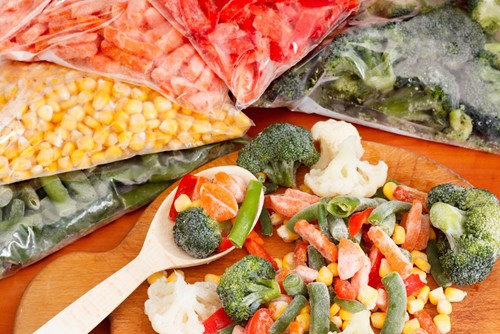Vegetables are a staple in any healthy diet. They have key nutrients rarely found in other foods, and taste delicious with almost any meal.
Fresh produce is delicious, but comes with some flaws. For one, it is seasonal, and when bought outside the natural growing season, vegetables can not only be pricey, but also lacking in flavor and color. Plus, fresh vegetables can expire quickly, giving consumers a limited time to enjoy their purchase.
The answer to problems like this lies with frozen vegetables. Found in almost any grocery store in America, frozen veggies are not only widely available with a long shelf life, they are also often just as delicious as fresh ones, have the same nutritional value and are commonly more cost-effective.
Consumers like it cold
The frozen vegetable industry has grown significantly over the past half-decade. Currently, frozen fruits and vegetables comprise more than one-third of the fruit and vegetable processing industry, according to a report from IBISWorld.
A number of factors have led to this expansion. For instance, many people have made a conscious effort to eat healthier, but the typical consumer is short on time for cooking. Frozen veggies offer a clear solution to this problem. Additionally, as the world’s middle class continues to grow, more people have access to freezers, allowing them to purchase and store frozen vegetables.
The processed fruit and vegetable industry as a whole, which includes canned, dried and dehydrated pre-cut foods, pre-made meals and juices, is expected to grow 3 percent annually to $317.1 billion by 2021.
As the industry continues to expand, and as more consumers show preferences for frozen vegetables, it’s crucial that manufacturers understand how to produce healthy and safe frozen products.
How vegetables are frozen
A consumer shopping in the frozen aisle of a typical grocery store may see printed on the side of a package a note boasting that the product inside was frozen just hours after picking. While this is likely true, there’s more to the process than the average consumer might expect.
How Products Are Made broke down the manufacturing process of peas, a popular frozen vegetable. One of the key steps to the process, after picking and washing but before freezing, is the blanching.
Blanching is the process of heating up a vegetable but not exactly cooking it. This is necessary for frozen vegetables because it eliminates enzymes and bacteria that could cause problems for consumers.
PennState Extension explained that blanching also protects the flavor, texture and color of the vegetables. Plus, it shrinks the vegetables and removes air pockets, so more can fit into one bag and they take up less space.
After blanching, the vegetables need to be cooled before being sorted, inspected and, finally, frozen.
Turning up the heat
Blanching requires vegetables to reach a certain temperature for a set period of time in order to inactivate destructive enzymes. According to Food Processing: Principles and Applications, the typical requirements in commercial blanching state that vegetables need to be brought to 212 degrees Fahrenheit or 150 degrees for a warm blanch, according to the Oregon Institute of Technology Geo-heat Center. In both cases, the potato is then cooled to 100 degrees.
It’s important that frozen vegetable manufacturers know the specific requirements of the foods they are working with. But it’s also crucial that they know what kinds of equipment can help them safely and quickly achieve this state while also being conscious of cost.
Shell and tube heat exchangers can be used in several capacities in these instances. First, they can be used to warm or cool the heating medium to prepare the food for blanching.
Second, they can be used for heat recovery. In processes like blanching, heat and energy is given off and lost during the process, but a shell and tube heat exchanger can help capture it and reuse it elsewhere. It can even be used to continue to heat the water needed to blanch the vegetables.
For information about how shell and tube heat exchangers can improve your vegetable processing operation, talk to the experts at Enerquip. Our team of engineers can work with you to find the perfect solution for your needs.

